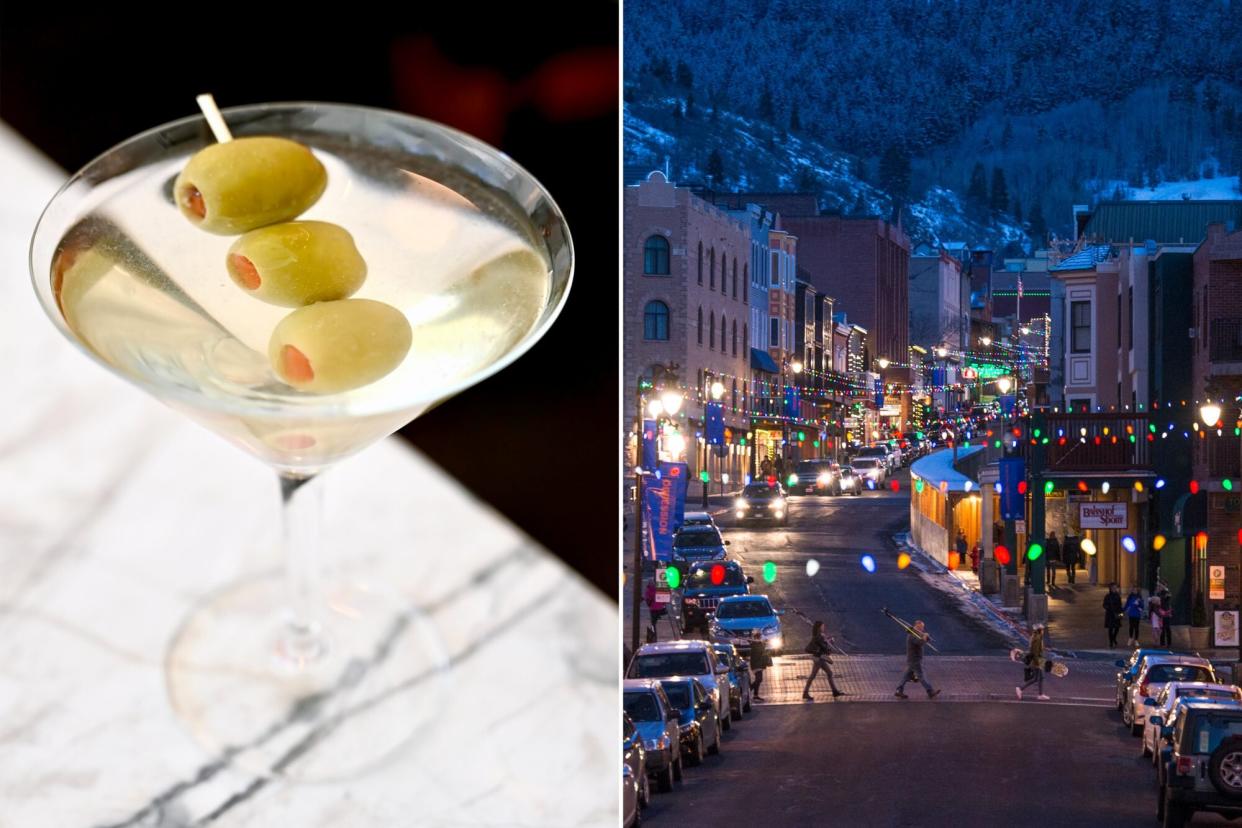Drinking in Utah Is Surprisingly Great

Courtesy of Kita; Jason Cameron / Getty Images
On my first trip to Utah this summer, I sat down for dinner on a gorgeous sunny day at Kita, the ambitious, Japanese-inspired steakhouse at the Pendry Park City. As I ate fistfulls of fluffy milk bread smeared with sesame butter and studied the drink menu, unable to choose between sake, wine, or a cocktail. Then, my decision was made for me: a server carried the tiniest dirty martini I've ever seen to a nearby table.
When the same server reached me, I asked her if that had been a mini martini, and why, and could I have it? She explained that it was actually their normal-sized martini, which was teeny because of Utah laws that dictate how much hard alcohol can be served in a single beverage.
This was my first exposure to the many laws surrounding liquor in Utah. The server explained that hard liquor, before it hits your cocktail, passes through a metered dispensing device that attaches to the top of the liquor bottle, ensuring that no more than 1.5-ounces of "primary liquor" pours into a mixed drink at a time. (Per Utah law, cocktails can have "secondary alcoholic flavorings," but the drink cannot exceed 2.5 ounces total of spirituous liquor.)
"Quite often people are shocked about the size of the martinis," said TJ Consiglio, the general manager at Kita. But, he pointed out, the size adds to the fun: smaller cocktails mean smaller (way cuter) glassware styles. "Our Nic and Nora glasses are not often seen anymore but they fit our Utah martinis perfectly."
I soon learned of other state regulations: that beer on tap cannot exceed 5% ABV – though drinks served by the bottle can have any percentage – and that restaurants cannot serve drinks unless food is ordered.
According to Utah's official government website, the state's liquor laws "are based on the general philosophy of making alcoholic beverages available in a manner that reasonably satisfies the public demand." It continues, "In this respect, however, the state does not promote or encourage the sale or use of alcohol."
On my trip, I encountered other laws that were less surprising to me, as I'd seen them in other states – you can't buy alcohol on Sunday, for example. I'm from Pennsylvania, where you have to buy liquor from state-run stores.
But this precise regulation of liquor in cocktails served at bars and restaurants posed such an interesting challenge for Utah bartenders, which, in turn, breeds creativity. Beyond just teeny tiny martinis.
"The liquor laws create an environment where bartenders must be meticulous while also creative," Consiglio told me. "We are very specific in our spirit selections for all drinks and want to see what packs the most flavor in every pour." This includes experimenting with "shrubs and syrups that do not have any alcohol but add layers on top of the spirits;" a popular shishito cocktail features sake and a shishito pepper shrub.
Beyond alcohol, every eating and drinking establishment I visited in the state, from Deer Valley to Moab, had truly delicious, thoughtful non-alcoholic beverages, catering to the state's significant sober population. (The fact that I could order an ice cold glass of Fresca, in my view an under-appreciated soda, just about everywhere was so thrilling to me.) At the Pendry Park City, one of the best things I drank was a booze-free cocktail called the Midsomer, by bartender Zack Rhoades: a geniusly balanced refresher with honeydew and shrub club soda, plus muddled strawberry, lemon, and mint. The cocktail recently won the top mixology award at the Park City Area Restaurant Association contest.
When Erin Pinta, who runs a Park City food account on Instagram, moved to the state from New York two years ago, she was surprised by the laws surrounding happy hours (discounts on alcohol are not allowed) and the 1.5-ounce maximum for liquor in cocktails. Since then, she's come to appreciate the local drink culture. "I've found that these restrictions force restaurants and bartenders to get more creative with their cocktails," she said. Her go-to bars are High West Saloon, Handle, and YUTA in Park City, and she adores the blueberry mojito at Royal Street Café in Deer Valley.
"The restrictions in some ways make our drinks more balanced," said Consiglio. "Traditional cocktail ratios tend to have a very alcohol-forward feeling. While guests might like a stiff drink, mixologists know a well-balanced drink is well received by the masses and is enjoyed multiple times a sitting."
I'm not going to lie – my favorite drinking experience in Utah was visiting Swig, a drive-through "dirty soda" chain that makes giant, icy soda beverages with various mix-ins, from flavored syrups to frozen fruit. On my way to the airport, I stopped at a Swig in Salt Lake City and reluctantly ordered the sparkling "Mango Breeze," a very busy concoction of sparkling water, coconut syrup, vanilla syrup, mango purée, frozen coconut, and coconut cream. To my great shock, the drink was the most refreshing, satisfying fountain soda-based anything I have put into my body. I will be back for it.

